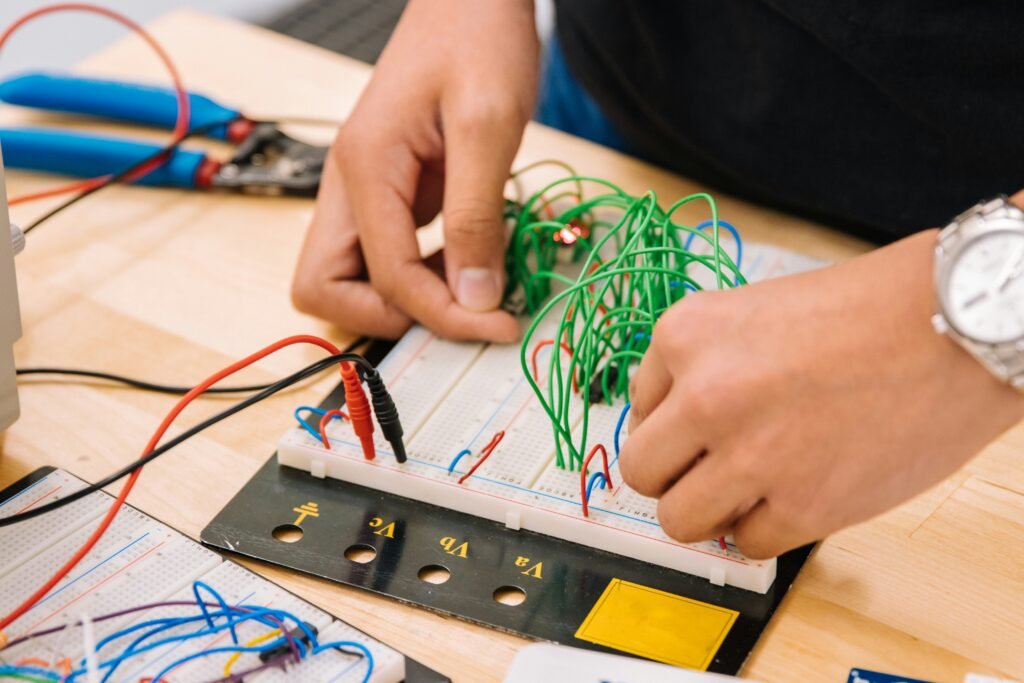In an era where technology and innovation are at the forefront of nearly every industry, preparing our children for the future has never been more critical. As parents, we strive to equip our kids with the skills they need to succeed in an increasingly complex world. One of the most effective ways to do this is by integrating STEAM (Science, Technology, Engineering, Art, and Math) education into their playtime. Hands-on learning through STEAM not only fosters cognitive growth but also supports emotional development, creativity, and problem-solving skills. In this article, we’ll explore why STEAM education matters and how it plays a crucial role in child development.
The Importance of STEAM Education

STEAM education is more than just a buzzword; it represents a holistic approach to learning that prepares children for the challenges of the future. By incorporating science, technology, engineering, art, and math into education, we give children the tools they need to understand and interact with the world around them. Here’s why STEAM education is so vital:
- Encourages Critical Thinking and Problem-Solving
STEAM subjects inherently involve complex problem-solving and critical thinking. Whether it’s figuring out how to build a stable structure, understanding the principles of gravity, or designing an aesthetically pleasing project, children are constantly challenged to think critically. This type of thinking is essential not only in academic settings but also in real-life situations. - Fosters Creativity and Innovation
The inclusion of art in STEAM emphasizes the importance of creativity alongside technical skills. Creativity is not just about making things look beautiful; it’s about thinking outside the box, coming up with innovative solutions, and approaching problems from different angles. Encouraging creativity in children helps them become more adaptable and innovative thinkers. - Builds Confidence and Resilience
Hands-on STEAM activities often involve trial and error. Children learn that failure is a part of the learning process and that persistence leads to success. This builds resilience and confidence, as they realize that they can overcome challenges through hard work and determination. - Promotes Collaboration and Communication
Many STEAM projects involve teamwork, which teaches children the value of collaboration. Working together to solve problems, share ideas, and communicate effectively are skills that are essential in almost every aspect of life. Collaborative play in STEAM also helps children develop social skills and the ability to work well with others. - Prepares for the Future Workforce
The future job market will be heavily influenced by STEAM fields. By introducing children to these subjects early on, we prepare them for careers in industries that are rapidly growing and evolving. Even if they don’t pursue a career in a STEAM field, the skills they gain—such as analytical thinking, creativity, and problem-solving—will be invaluable in any profession.
The Role of Hands-On Learning in Child Development
Hands-on learning is a critical component of STEAM education. Unlike traditional learning methods that rely heavily on rote memorization and passive absorption of information, hands-on learning engages children actively, making the learning experience more meaningful and memorable. Here’s how hands-on STEAM learning impacts child development:
- Enhances Cognitive Development
Hands-on STEAM activities stimulate brain development by engaging multiple senses and encouraging exploration. When children build, experiment, and create, they are developing neural connections that support cognitive functions such as memory, attention, and executive function. - Improves Fine and Gross Motor Skills
Activities like building structures, using tools, or creating art projects require the use of both fine and gross motor skills. These activities help children develop coordination, dexterity, and physical control, which are important for everyday tasks and overall physical development. - Boosts Emotional Intelligence
Through hands-on STEAM activities, children learn to manage frustration, celebrate success, and persevere through challenges. These experiences contribute to emotional intelligence, helping children develop self-awareness, empathy, and the ability to cope with emotions. - Encourages a Growth Mindset
Hands-on STEAM learning promotes a growth mindset—the belief that abilities can be developed through effort and practice. When children see that they can improve and succeed through hard work, they become more willing to take on new challenges and less afraid of failure. - Facilitates Deeper Understanding
Hands-on activities allow children to explore concepts in a tangible and interactive way, leading to a deeper understanding of complex ideas. For example, building a model roller coaster helps children grasp physics concepts like gravity and momentum more effectively than reading about them in a textbook.
Encouraging STEAM Learning at Home

As parents, you play a crucial role in fostering your child’s interest in STEAM. Here are some ways to encourage STEAM learning at home:
- Create a STEAM-Friendly Environment
Set up a dedicated space for STEAM activities at home. This could be a corner of a room with building materials, art supplies, and simple tools. Having a designated area for experimentation and creation encourages children to explore and engage with STEAM subjects regularly. - Incorporate STEAM into Everyday Activities
STEAM learning doesn’t have to be limited to structured activities. You can incorporate STEAM concepts into everyday life—cooking involves chemistry, building with blocks involves engineering, and even a trip to the park can be an opportunity to explore biology. - Encourage Curiosity and Questioning
Foster your child’s natural curiosity by encouraging them to ask questions and explore how things work. Instead of providing immediate answers, guide them to discover the answers through experimentation and exploration. - Provide Hands-On STEAM Toys and Kits
Invest in STEAM-focused toys and kits that encourage hands-on learning. Building sets, science kits, art supplies, and coding games are all excellent tools to help your child explore STEAM subjects in a fun and engaging way. - Join in the Fun
Get involved in your child’s STEAM activities. Working together on a project not only enhances learning but also provides valuable bonding time. Your involvement shows your child that learning can be a shared, enjoyable experience.
Conclusion
STEAM education is an essential part of preparing our children for the future. By integrating science, technology, engineering, art, and math into playtime, we can foster cognitive and emotional development, encourage creativity, and equip our kids with the skills they need to succeed in a rapidly changing world. Hands-on STEAM learning is particularly powerful because it engages children in a meaningful way, making learning both fun and effective.
As parents, we have the opportunity to inspire a love of learning in our children by encouraging them to explore, create, and experiment. Whether through structured activities or everyday play, integrating STEAM into your child’s life will set them on a path to becoming confident, curious, and innovative thinkers.
So, the next time your child asks to build something or experiment with a new idea, say yes—because in those moments, they are not just playing, they are learning, growing, and preparing for the future.
